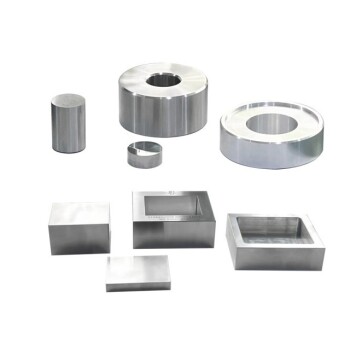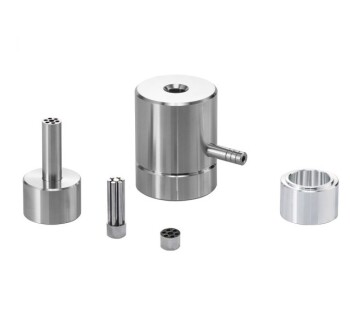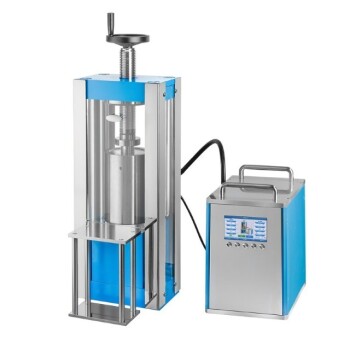In practice, most laboratory press platens can be heated to temperatures ranging from approximately 500°F to 1000°F (260°C to 540°C), with specialized models capable of reaching 1200°F (650°C) or higher. While a broad range is available across the market, the specific capability of any given press is intentionally designed for a distinct set of material applications.
The maximum temperature of a lab press is not just a specification—it's the primary indicator of its intended use. Understanding your material's processing requirements is the first step to selecting a machine that is not only capable but also safe and efficient for your task.
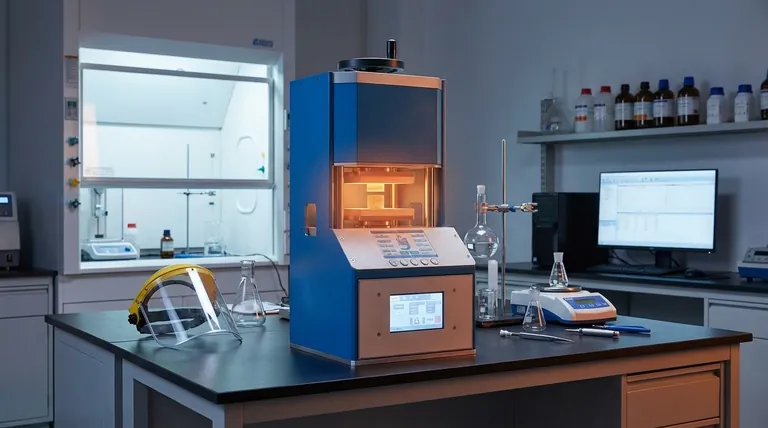
Deconstructing the Temperature Range by Application
The temperature a press can achieve directly correlates with the types of materials it is designed to process. This range is not arbitrary; it is segmented based on common industrial and research needs.
Standard Processing (Up to 600°F / 315°C)
This is the most common range for laboratory presses. It covers the thermal requirements for a vast majority of materials used in quality control and R&D.
Applications in this tier include the molding, curing, and laminating of thermoplastics (like polyethylene, polypropylene), elastomers (rubber), and thermoset plastics. Most standard sample preparation for material testing falls squarely within this range.
High-Performance Processing (600°F - 1200°F / 315°C - 650°C)
Presses that operate in this upper tier are specialized instruments for advanced materials. Reaching and maintaining these temperatures requires more robust engineering.
This capability is necessary for working with high-performance polymers like PEEK and polyimides, as well as for applications in forming composites, bonding advanced materials, and some metallurgical testing.
Key Factors That Determine Thermal Capability
A press's maximum temperature is the result of several interconnected design choices. Understanding these elements helps you evaluate a machine beyond its datasheet.
Heating Method and Power
The vast majority of modern heated presses use electric cartridge heaters embedded within the platens. The number, placement, and wattage of these heaters determine the maximum temperature and the speed at which it can be reached.
Platen Material and Design
Platens are typically made from steel or aluminum. Steel is preferred for high-temperature applications due to its durability and stability at elevated heat. Aluminum offers better thermal uniformity at lower temperatures but is unsuitable for high-heat processes.
Cooling System Integration
The ability to cool the platens under pressure is often as critical as heating them. Many processes require rapid cooling to "freeze" the material's structure. This is typically achieved with channels inside the platens through which water or another coolant can be circulated.
Understanding the Trade-offs
Selecting a high-temperature press involves balancing capability with cost and complexity. It is crucial to be aware of the associated challenges.
Cost vs. Capability
There is a significant cost increase for presses that exceed the standard 600°F range. This is due to the need for higher-grade platen materials, more powerful heaters, advanced insulation, and more sophisticated temperature controllers.
Temperature Uniformity
Achieving a consistent temperature across the entire surface of a large platen becomes exponentially more difficult at higher temperatures. Look for presses with multiple heating zones and advanced PID (Proportional-Integral-Derivative) controllers to ensure uniformity for your parts.
Safety and Insulation
Operating at high temperatures introduces significant safety risks. High-temperature presses require robust insulation to protect the operator, prevent heat loss, and safeguard the press's hydraulic and electronic components from thermal damage.
Making the Right Choice for Your Goal
To select the correct equipment, you must look beyond the maximum temperature and consider the entire thermal cycle your material requires.
- If your primary focus is standard polymers or rubber testing: A press with a maximum temperature of 500-600°F is sufficient, more cost-effective, and easier to manage.
- If you are working with advanced composites or high-performance thermoplastics: You must specify a press capable of reaching at least 800°F (425°C) to ensure you have an adequate operational margin.
- If your process requires precise heating and cooling cycles: Prioritize a press that features both high-wattage heaters and integrated platen cooling channels, managed by an advanced controller.
Ultimately, matching the press's thermal performance to your specific material's requirements ensures both successful processing and a wise investment.
Summary Table:
| Temperature Range | Common Applications | Key Considerations |
|---|---|---|
| Up to 600°F (315°C) | Thermoplastics, elastomers, thermoset plastics | Cost-effective, standard for most labs |
| 600°F - 1200°F (315°C - 650°C) | High-performance polymers, composites, metallurgical testing | Higher cost, requires robust heating and cooling |
Need a lab press that meets your exact temperature requirements? KINTEK specializes in automatic lab presses, isostatic presses, and heated lab presses designed for precise thermal control. Whether you're processing standard polymers or advanced composites, our machines ensure safety, efficiency, and reliability. Contact us today to discuss how we can enhance your laboratory's capabilities!
Visual Guide
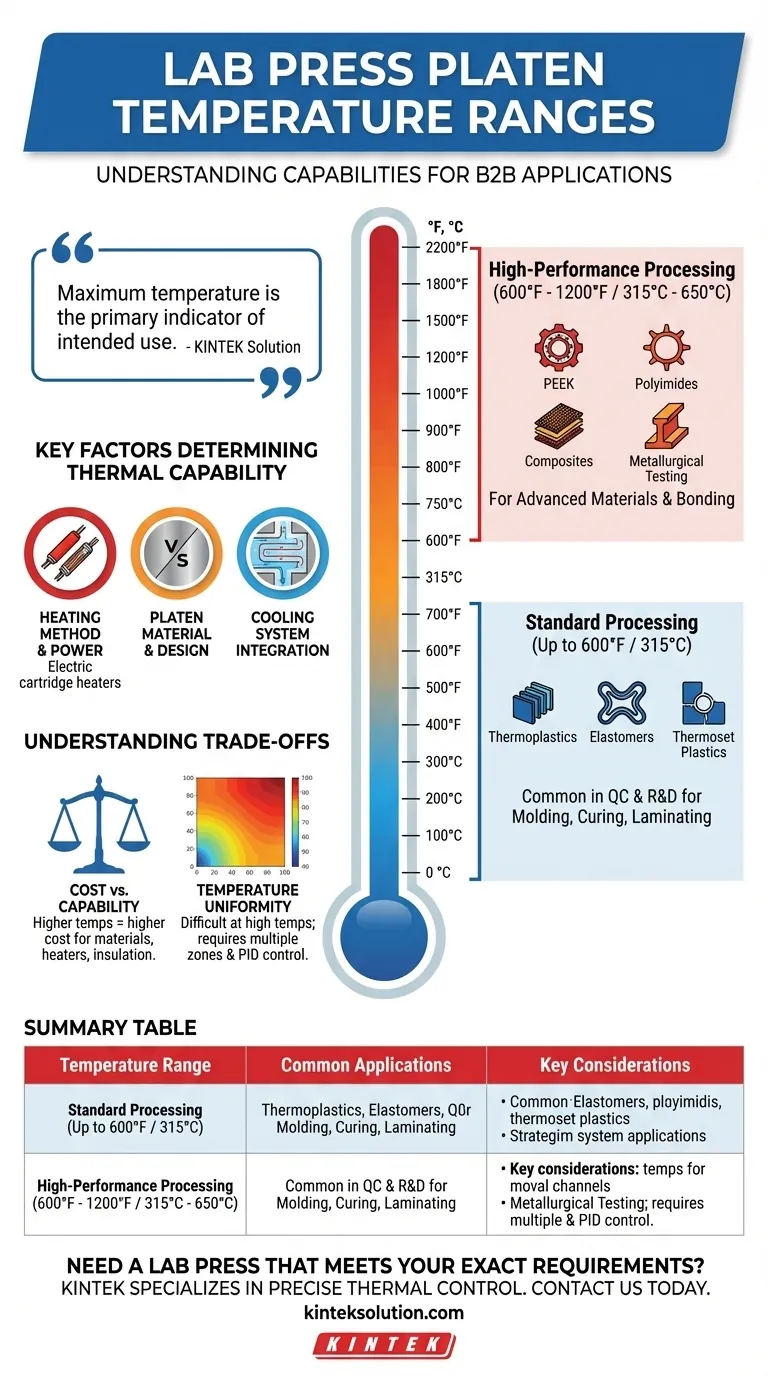
Related Products
- Automatic High Temperature Heated Hydraulic Press Machine with Heated Plates for Lab
- Automatic Heated Hydraulic Press Machine with Hot Plates for Laboratory
- Laboratory Manual Heated Hydraulic Press Machine with Hot Plates
- Heated Hydraulic Press Machine with Heated Plates for Vacuum Box Laboratory Hot Press
- Lab Heat Press Special Mold
People Also Ask
- How does using a hydraulic hot press at different temperatures affect the final microstructure of a PVDF film? Achieve Perfect Porosity or Density
- What role does a heated hydraulic press play in powder compaction? Achieve Precise Material Control for Labs
- How are heated hydraulic presses applied in the electronics and energy sectors? Unlock Precision Manufacturing for High-Tech Components
- What is the role of a hydraulic press with heating capabilities in constructing the interface for Li/LLZO/Li symmetric cells? Enable Seamless Solid-State Battery Assembly
- Why is a heated hydraulic press essential for Cold Sintering Process (CSP)? Synchronize Pressure & Heat for Low-Temp Densification




